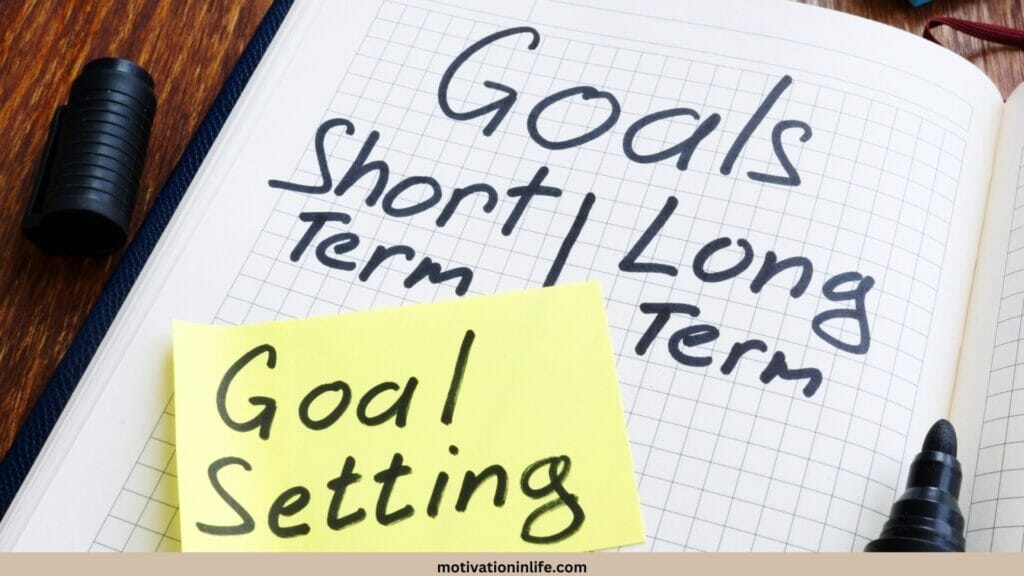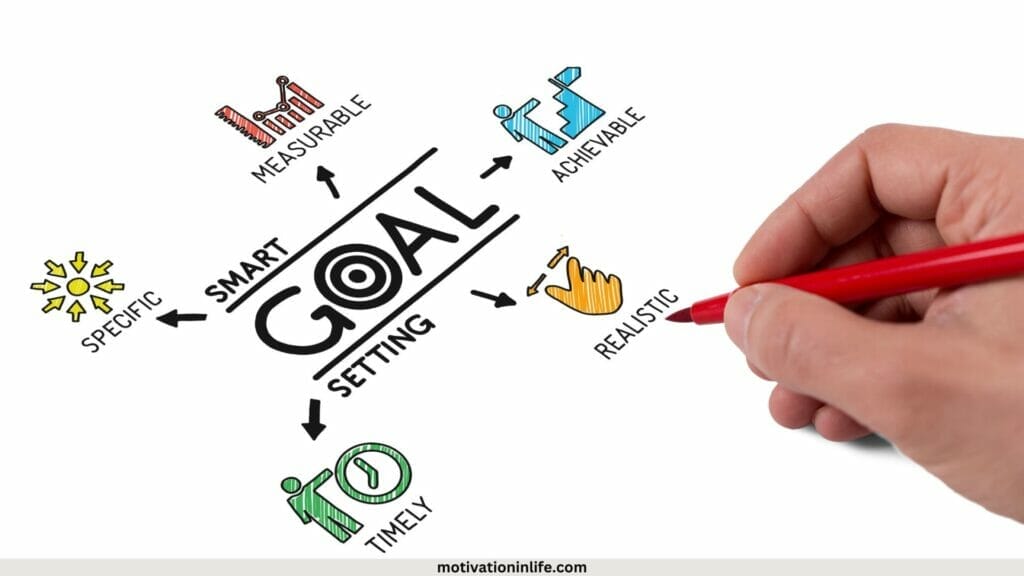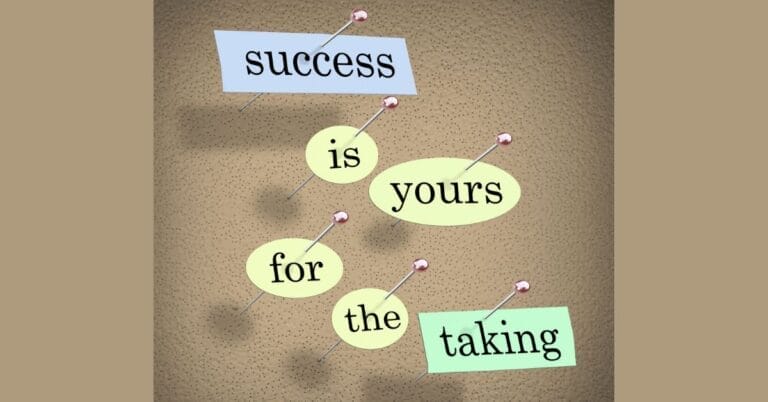Principle Of Goal Setting—Whopping Theories For Goals In Life (For The 40+)
“All Our Dreams Can Come True—If We Have The Courage To Pursue Them.”
Walt Disney
Setting goals and the principle of goal setting is a topic that has been widely discussed over the years and is an important aspect of personal and professional development, especially as you go past the years beyond the 40s!!
The simple life goals you set for yourself provide you with the direction and motivation needed to succeed in various areas of your life.
Several principles of goal setting and the goals setting theory related to them have been proposed by researchers over time. This post explores some of these theories and their practical applications in achieving success, that help you understand the science behind setting goals!
Table of Contents
AFFILIATE DISCLOSURE
This post may contain affiliate links. We may earn a small affiliate commission at no extra cost if you click on them.
motivationinlife.com is also a participant in the Amazon Services LLC Associates Program, an affiliate advertising program designed to provide a means for sites to earn advertising fees by advertising and linking to Amazon.com and Amazon.in
We may earn a small commission for our endorsement, recommendation, testimonial, and/or link to any products or services from this website.

The Principle of Goal Setting: The Various Theories
The most famous theory behind the principle of goal setting is Locke and Latham’s Goal-Setting Theory.
Locke’s theory of goal setting states that when you set goals, it provides you clarity and focus. This helps you understand what you want to achieve. It also explains how much effort it will take to achieve a particular goal, and how to measure progress towards achievement.
Locke and Latham’s goal setting model emphasizes the importance of setting specific, measurable, achievable, relevant, and time-bound (SMART) goals for success. This theory bases itself on the principle of goal setting that is clear, measurable, and unambiguous.
Another popular approach to goal-setting is Mager’s Performance Analysis Model.
This model suggests that specific performance objectives should be established based on
- an analysis of desired outcomes,
- overall performance levels,
- and attainable measurements or standards.
Mager’s approach encourages you to set performance improvement targets. This is based on an analysis of your strengths and weaknesses.
Download our Goal-Setting Planner we have designed using the templates at Creative Fabrica to help you set effective goals for yourself as you read through the various theories for setting goals.
Another popular principle of goal setting is the Self-Determination Theory. This theory also offers valuable insights into the principles and techniques of goal setting for success.
According to this theory, people need autonomy or control over their lives to experience optimal levels of happiness and well-being.
In practice, this means that you are more likely to achieve success when you choose goals aligned with your values rather than external expectations.
Another interesting goal-setting theory is the Expectancy Theory. This theory suggests that individuals are more likely to put effort into achieving goals when they perceive a link between the level of effort they have put in vis a vis the expected outcome or reward achieved from it.
One practical application of these theories can be seen in setting SMART career goals during performance appraisals or personal development planning meetings at work or in daily life.
To set effective SMART goals using these principles requires attention to details
- such as coming up with specific attainable objectives aligned with key results areas,
- evaluating progress made towards meeting objectives and difficult goals.
- and assessing whether goals remain relevant to long-term career aspirations.
In addition, these theories also guide you in setting personal life goals.
For example, say you want to achieve success in weight loss. You can first determine the desired amount of weight loss necessary by setting an achievable goal by the target date (SMART goal ). This you will do, along with determining the small steps needed to achieve the goal. E.g., healthy eating habits, which may be reviewed at periodic intervals.

Locke and Latham Goal Setting Theory
Locke and Latham’s goal-setting theory is one of the most popular and widely researched theories on the topic of setting goals. Edwin A. Locke and Gary P. Latham, two psychologists, developed this theory in the late 1960s and early 1970s.
According to this theory, setting specific, challenging goals leads to higher levels of performance compared to a do-your-best or no-goal condition.
According to the theory, you get a sense of purpose and direction when you set clear, measurable, and achievable goals. This can boost motivation and lead to greater personal satisfaction.
If you are not clear about what your purpose in life is take this quiz in our blog post What Is My Life Purpose Quiz To Reinvent Yourself (For The 40+)
Locke and Latham identified five basic principles for effective goal-setting:
- Clarity
- Challenge,
- Commitment,
- Feedback,
- Task complexity.
- Clarity refers to ensuring that goals are specific and unambiguous.
- Challenge involves setting sufficiently ambitious targets. These need effort but are still achievable.
- Commitment involves making a public commitment to achieving the goal to increase accountability.
- Feedback pertains to the need for regular feedback on one’s progress toward achieving the goal.
- Task complexity relates to adjusting the level of detail needed in planning depending on how complex or unfamiliar the task is.
The formulation of goals should include information about both outcomes. (i.e., what will be achieved) as well as behaviors (what actions need to be taken).
As part of this process, those setting their personal goals can also identify barriers and obstacles that they may face along the way.
Overall, Locke and Latham’s Goal Setting Theory has become highly influential for managers seeking ways to enhance employee performance. They do this via an understanding of how to set targets that can be helpful towards increased productivity.
You can at the same time apply these principles in increasing your productivity as you strive for personal growth.

Mager’s Performance Analysis Model.
This model is widely used in instructional design and for performance improvement. The model helps to identify performance gaps and determine the cause of those gaps.
The model is broken down into three parts:
- Performance Criteria,
- Desired Performance,
- Actual Performance.
Performance criteria refer to the standards of performance that have been established for a particular task or job.
Desired performance refers to the level of performance that an employee should exhibit. This is based on their job responsibilities and the established criteria. The term “actual performance” refers to an employee’s current level of performance.
The goal of using this model is to identify where discrepancies exist between these three areas. If there is a gap between actual and desired performance, then there are likely areas where training or other interventions may be needed.
To conduct a performance analysis using this model :
- One must first establish clear criteria for what makes up successful job performance.
- Next, assess the employee’s current level of skill to these standards.
- Finally, analyze any discrepancies that exist between the desired and actual performance levels.
It’s important to note that there may be factors outside of the employee’s control that impact their ability to achieve desired levels of performance.
For example, inadequate resources or unclear communication from leadership. This could contribute to sub-optimal outcomes.
In summary, Mager’s Performance Analysis Model serves as a useful tool for identifying gaps in workplace productivity or individual job role efficiency.
By systematically breaking down various aspects of how work should be performed at its best, you can make informed decisions. This will help you know how to best train yourself or your team to meet personal or organizational goals more effectively.

Self-Determination Theory for Goal Setting
The Self-Determination Theory (SDT) is a psychological theory. It explains how people motivate themselves to achieve their goals.
The SDT outlines three basic psychological needs:
- autonomy,
- competence,
- and relatedness.
These needs serve as the foundation for an individual’s intrinsic motivation.
- Autonomy refers to having control over one’s life and actions.
- Competence reflects the need for challenges and the mastery of skills.
- Relatedness refers to a person’s social interaction and connectedness with others.
According to SDT, the satisfaction of these psychological needs is essential for fostering intrinsic motivation.
Self-determined individuals focus on their interests and values when setting goals, rather than following external demands or pressures. They can set goals that are meaningful and relevant to them, which boosts their motivation towards achieving those goals.
Based on SDT, goal setting should align with your underlying values and interests. This fosters feelings of autonomy and accomplishment. When you feel you have some control over your situations, it leads to improved self-esteem, happiness, and success.
One key factor in successful goal setting using SDT is providing support that emphasizes choice rather than control or pressure.
In summary, the Self Determination Theory provides insight into how you can direct yourself toward achieving desired outcomes by focusing on your personal values and interests.
When these factors align with goal-setting efforts, it can significantly boost self-motivation and ultimately lead to greater success in achieving your goals.

The Benefits Of Goal Setting Under Various Goal Setting Theories
Setting goals is an essential part of personal and professional growth. As we have seen these help individuals focus on what they want to achieve. It also helps them to develop a clear plan for achieving their goals.
Let’s explore the benefits of goal-setting following different goal-setting theories:
Locke and Latham’s Goal-Setting Theory:
The Locke and Latham Goal-Setting Theory states that specific, challenging goals lead to higher levels of performance.
This is especially true when goals are combined with
- feedback,
- commitment,
- and task complexity
The benefit of this theory is that it provides a framework for setting measurable goals. This motivates individuals to perform at their best.
Mager’s Performance Analysis Model:
Mager’s model focuses on improving performance by identifying specific gaps between the current level of performance and the desired level of performance.
By setting goals based on this analysis, individuals can improve their skills and knowledge while achieving better results.
Self-Determination Theory (SDT):
SDT emphasizes the importance of intrinsic motivation rather than extrinsic motivation.
Intrinsic motivation comes from within an individual. This means that they find value in accomplishing the goal itself rather than looking for external rewards.
The benefit of SDT is that it promotes long-term success. According to it, individuals are more committed to achieving goals that align with their values and interests.
Overall, goal-setting theories offer several benefits, including:
- Increased motivation
- Improved focus on priorities
- Enhanced clarity about objectives
- Greater confidence in decision-making
- Improved measurement of progress
Setting goals, as we have seen, is essential to success in both personal and professional life. It provides direction toward your desired outcomes while promoting growth through continuous improvement.
By applying various goal-setting theories into practice, you can optimize your ability to set achievable yet challenging goals. These goals must align with your values and promote self-improvement along the way.

How Does Motivation Increase By Following The Principle Of Proper Goal Setting?
Locke and Latham’s Goal Setting Theory states that setting clear and specific goals is motivating for individuals.
They think that both the difficulty and the possibility of achieving one’s goals motivate people. This means that if a goal is too easy, an individual might not feel challenged or motivated to achieve it. Similarly, if a goal is unattainable, an individual might not try at all because they don’t believe it’s possible.
Therefore, when you set challenging yet achievable goals for yourself, you tend to be more motivated to work toward them. This, according to them is the core of any effective goal setting technique.
In addition to this, Mager’s Performance Analysis Model emphasizes the importance of breaking down larger goals into smaller, more manageable tasks.
This helps make the goal less overwhelming and allows you to see progress along the way. As you complete each smaller task, you gain a sense of accomplishment, which can lead to increased motivation.
The self-determination theory emphasizes the importance of intrinsic motivation. This refers to pursuing activities because they are personally rewarding or satisfying, rather than extrinsic motivation (such as external rewards).
By setting goals that align with your values and interests -goals that are truly meaningful to you – you will be more likely to find fulfillment in achieving them.
Overall, effective goal setting helps increase motivation by
- providing clarity around what needs to be done,
- breaking down larger goals into manageable steps,
- aligning with our values and interests,
- creating a sense of progress and accomplishment along the way.
It’s important to note that everyone is motivated differently. Each individual may respond better to different types of goal-setting strategies.

How Can You Improve Your Focus On Priorities By Setting Goals Effectively?
Improving focus on priorities is achieved through effective goal setting.
When you have clear and specific goals,
- you can prioritize your tasks
- and allocate your time and resources accordingly.
5 principles of goal setting to improve focus on priorities:
1. Set clear and specific goals
As mentioned earlier in the Locke and Latham Goal Setting Theory, setting specific goals is crucial for motivation. It helps to create clarity around what you want to achieve.
2. Break down larger goals into smaller, achievable tasks
This will allow you to focus on one task at a time without feeling overwhelmed or distracted by other responsibilities.
3. Use visual aids
Visual aids such as spreadsheets, vision boards, calendars, or apps can help you keep track of your goals, deadlines, and progress toward achieving them.
4. Cut distractions
Try to identify what’s distracting you from focusing on your priorities. Remove those distractions as best as possible.
5. Prioritize based on urgency and importance:
Sorting tasks based on their level of urgency and importance will allow you to tackle the most pressing matters first.
By employing these strategies effectively, it’s easier to stay focused on accomplishing important tasks while minimizing distractions along the way.

How Can Goal Setting Be A Motivational Tool To Get Greater Confidence In Decision Making?
Setting goals can help improve confidence in decision-making. When you have clear and specific goals, you can make decisions with more clarity and purpose. Here are some ways goal setting can improve decision-making:
1) Providing direction
When you set a goal, it gives you a clear direction of where you want to go. This helps end the indecision that often comes with not knowing what to do next.
2) Enhancing focus
Setting goals helps you focus your attention on the things that matter most in achieving your desired outcome.
This focused approach can then help clarify what decisions need to be made along the way. You feel less overwhelmed by all the choices available.
3) Building confidence
By putting together a plan of action based on your goals, you’re able to build confidence in your ability to achieve them.
As you begin working towards these goals, each successful step builds upon itself and creates even more confidence.
Overall, by using goal setting as a tool for decision-making, you can gain greater clarity, and focus. This enhances your confidence in your ability to fulfill your dreams.

Principle of Goal Setting: Key Takeaways
Goal setting theory is a widely recognized and established concept in the field of psychology. This is largely due to the work of Edwin Locke and Gary Latham.
As we have seen, this theory posits that setting goals can lead to
- increased motivation,
- focus,
- and better performance.
There are several different goal-setting theories. They emphasize the importance of autonomy and intrinsic motivation in achieving goals.
One of the main benefits of effective goal setting is increased motivation. This helps you envision a clear path toward achievement. This motivation can also lead to an increased level of focus on priorities and long-term objectives.
The SMART framework for goal setting provides a useful guideline for creating
- specific,
- measurable,
- achievable,
- relevant,
- and time-bound goals
that enhance motivation while helping avoid any potential missteps or distractions.
Furthermore, by setting specific goals that align with personal values and interests, you may experience greater satisfaction in your pursuits. Goal attainment can also help improve confidence in decision-making by providing a tangible set of accomplishments that bolster esteem and confidence.
In conclusion, goal setting is crucial for both personal and professional development. The various principles of goal-setting highlight different aspects of what makes an effective approach to goal-setting in various situations.
By identifying clear objectives based on core values, using SMART criteria as needed, and staying motivated through both internal motivators like the intrinsic desire for progress and external ones like rewards or recognition from others – you can achieve great things beyond your 40s!
Recommended Books To Start Setting Goals Successfully
- The 7 Habits Of Highly Effective People By Stephen R. Covey (Amazon.com | Amazon.in)
- Smart Goals Made Simple: 10 Steps To Master Your Personal And Career Goals By S.J. Scott (Amazon.com | Amazon.in)
IF YOU ENJOYED READING THIS POST, PLEASE PIN ONE OF THESE IMAGES BELOW!
I will be grateful for your kind gesture. Thank you!











